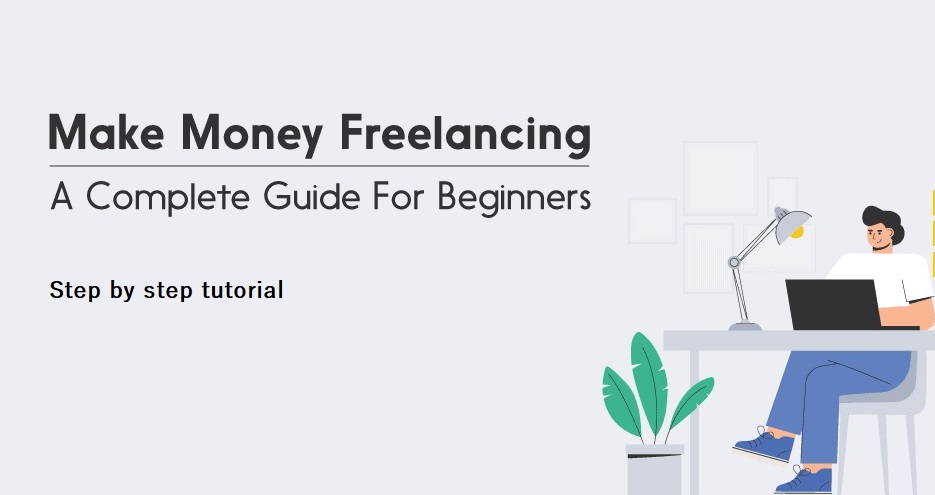Freelancing - Step by Step Tutorial
Offer your skills and services as a freelancer. Platforms like Upwork, Freelancer, and Fiverr connect freelancers with clients seeking various services such as writing, graphic design, web development, virtual assistance, and more.

Welcome to the tutorial on freelancing, where you can offer your skills and services to clients around the world. Freelancing provides the opportunity to work independently, set your own schedule, and earn income by leveraging your expertise in various fields.
In this tutorial, we will explore the world of freelancing and guide you through the steps to get started on platforms like Upwork, Freelancer, and Fiverr. These platforms connect freelancers with clients seeking a wide range of services, including writing, graphic design, web development, virtual assistance, and much more.
Freelancing allows you to showcase your skills, build a portfolio, and establish your reputation as a reliable and talented professional. Whether you're a seasoned expert or just starting out, freelancing offers a flexible and accessible way to monetize your skills and pursue your passion.
Throughout this tutorial, we will cover topics such as creating a profile, defining your services and rates, submitting proposals, communicating with clients, managing projects, and growing your freelancing business. We will also provide tips and best practices to help you succeed in the competitive world of freelancing.
Please note that freelancing requires dedication, self-discipline, and effective communication skills. Success as a freelancer takes time and effort, but with the right approach and a commitment to delivering quality work, you can build a thriving freelance career.
So, if you're ready to embark on a journey of independence, flexibility, and endless possibilities, let's dive into the tutorial and discover how you can start your freelancing career today!
Step 1: Define your services and target market
Before diving into freelancing, determine the services you want to offer based on your skills and expertise. Identify your target market and understand the specific needs and pain points of potential clients in that market.
Step 2: Research freelancing platforms
Explore freelancing platforms such as Upwork, Freelancer, Fiverr, or specialized platforms in your niche. Research each platform's features, user reviews, fees, and the types of services they offer. Select one or multiple platforms that align with your skills and target market.
Step 3: Create a professional profile
Sign up on your chosen platform(s) and create a professional profile. Highlight your skills, experience, and portfolio. Craft a compelling bio and showcase samples of your work to attract potential clients. Use professional headshots and provide accurate contact information.
Step 4: Set your rates and create service packages
Determine your pricing structure based on industry standards, your experience level, and the complexity of your services. Consider offering different service packages to cater to different client budgets and needs. Be transparent about your rates and clearly outline what each package includes.
Step 5: Build a portfolio
Compile samples of your previous work to showcase your skills and expertise. Create an online portfolio or a portfolio section on your profile to display your best projects. Ensure your portfolio is well-organized, visually appealing, and demonstrates your capabilities in delivering high-quality work.
Step 6: Write compelling proposals
When submitting proposals for projects, craft personalized and persuasive proposals that address the client's specific needs. Tailor your proposals to highlight how your skills and experience can solve their problems or fulfill their requirements. Clearly communicate your value proposition and why you are the best fit for the job.
Step 7: Communicate effectively with clients
Once you land a project, maintain clear and prompt communication with your clients. Respond to messages and inquiries in a professional and timely manner. Seek clarifications when needed, provide regular updates on project progress, and address any concerns or questions promptly.
Step 8: Deliver high-quality work
Ensure you meet or exceed client expectations by delivering high-quality work. Pay attention to detail, follow instructions carefully, and meet project deadlines. Seek feedback and make necessary revisions to ensure client satisfaction.
Step 9: Request client testimonials
After successfully completing a project, request feedback and testimonials from satisfied clients. Testimonials can enhance your credibility and attract more clients. Display them on your profile or website to showcase your track record of delivering exceptional results.
Step 10: Promote your services and expand your network
Actively market your services to attract new clients. Leverage social media, professional networking platforms, and your own website or blog to showcase your expertise and share valuable content. Network with professionals in your industry, attend conferences or events, and join relevant online communities to expand your reach.
Step 11: Continuously improve your skills
Stay updated with the latest trends and advancements in your field. Invest in professional development by taking courses, attending workshops, or obtaining certifications. Continuous learning and skill improvement are essential to staying competitive in the freelancing industry.
By following these steps and consistently delivering exceptional work, you can establish yourself as a successful freelancer. Remember to be patient and persistent, as building a thriving freelance career takes time. Embrace challenges, adapt to client needs, and continuously refine your skills to achieve long-term success.
